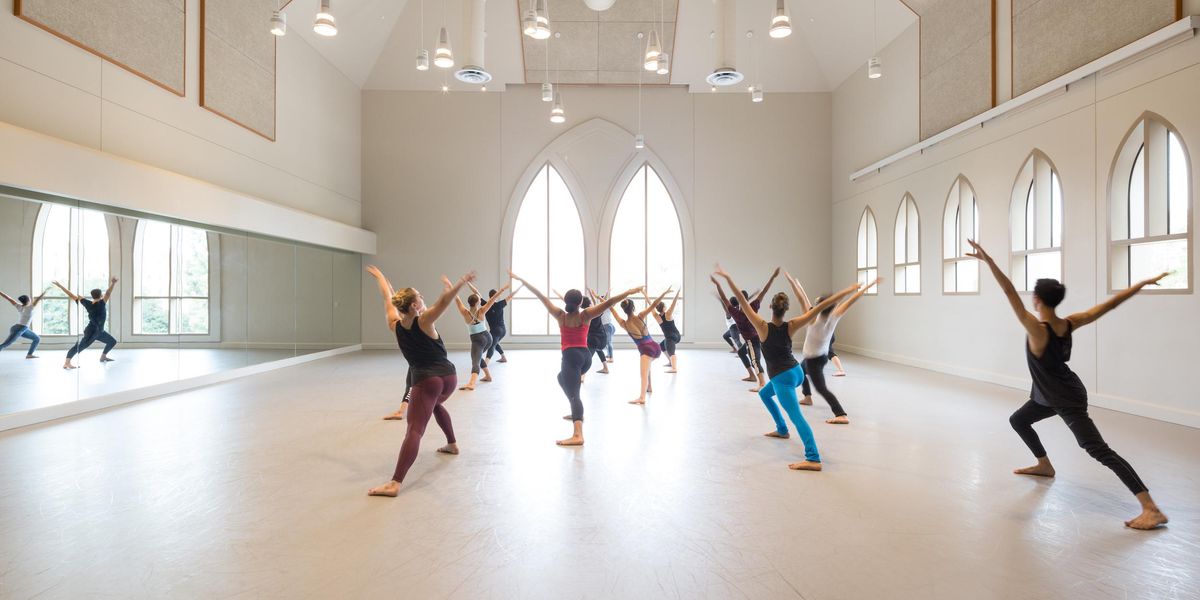Being Misty
It’s not difficult to see why filmmakers would want to create a biopic of
Misty Copeland’s story.
The plot seems tailor-made for Hollywood: A 13-year-old black girl wanders into a ballet class at her local Boys & Girls Club and turns out to be a prodigy. By 18, she joins American Ballet Theatre and sets her sights on becoming a principal, which would make her the first female African American to reach that level at the company. Several obstacles get in her way: weight struggles, career-threatening injuries, the isolation of being black in an overwhelmingly white world. But she perseveres. She seeks out coaches and mentors, and takes back-to-back classes on her days off. She hires manager Gilda Squire and starts landing book deals and national ad campaigns. Finally she’s given the ultimate test: dancing Odette/Odile at Lincoln Center. By this time she’s arguably the most famous dancer in the country. Fans fly to New York just to see her perform. Although she falters on the infamous 32 fouettés, the performance is a triumph, and soon after, it finally happens: She is promoted to principal.
So what’s it like once you’ve gotten your picture-perfect Hollywood ending?
Photo by Jayme Thornton
What’s changed for you since becoming a principal?
The schedule is actually a lot less dancing on a daily basis, which is taking some getting used to! But it’s nice to be able to focus on just one part per ballet. The roles are more intense, and there’s a lot of pressure to uphold these standards that so many incredible dancers set over the 75-year history of this company.
Juliet surprised Copeland as her favorite role. Photo by Rosalie O’Connor, Courtesy ABT.
Any roles you’re particularly excited for?
Juliet. At this point in my career, it’s my favorite role I’ve ever danced. The experience of getting onstage…there’s no way of preparing for it other than getting out there and living the part as it’s happening. There aren’t very many dancing scenes for her; there’s two big pas de deux, but the bulk of it is acting. It was kind of a shock how much I enjoyed it. Acting turned out to be a strength of mine that I don’t think I knew about.
What will be in your new book, Ballerina Body?
It’s an inside look at all that it takes to get a dancer’s body. Most people, when they think “ballerina body,” have this perception that it’s unhealthy and eating-disordered and too thin. We in the dance world know that’s not the case. I feel like I’ve created my own ballerina body that works for me, and everyone can create their own version of that, their own best self. So it’s sharing different recipes that I cook, cross-training that I do, plus some of my mantras and experiences. Dancers have such strong minds and discipline. So many people can benefit from the tools we have to create a healthy lifestyle.
Are you working on any other projects right now?
I’m launching my own dancewear line called Egal this summer. I created it from my experience as a dancer who doesn’t have a stick figure, who needs support in her dancewear. I’ve been working on it for seven years, so it’s extremely exciting to finally have it be coming out.
Copeland says she never imagined she’d dance Odette. Photo by Darren Thomas/QPAC, Courtesy ABT.
How do you balance outside opportunities with your work at ABT?
I feel like it’s easier when you’re busy to just keep going. But my roles always come first. I only work with brands willing to work around my schedule. But I’ll sacrifice the time with friends, the dinners and hanging out. Right now, I have this amazing platform and I want to take advantage of it and do as much as I can with the time I have.
Has fame changed things for you?
It’s a bit shocking every time I go out onstage and the audience responds in a way that they didn’t four years ago. It’s like, Wow, I can’t believe all these people are so excited. But that’s amazing. I think every ballet audience should be that way.
Has that impacted your relationship to other ABT dancers?
Not to my knowledge! This career is too much work to bring that stuff into the studio with you. And there’s no way to avoid being humbled every single day when you walk into the studio and are surrounded by so much talent.
What’s been the highlight of these past few years?
The promotion. But also all the hard work that went into getting to that point. Beyond proving to Kevin McKenzie, it was about proving to myself that I’m capable of being a Swan Queen and being the Firebird and being Juliet.
One of Copeland’s first breakthroughs: the Firebird. Photo by Gene Schiavone, Courtesy ABT.
Did you doubt that you could do it?
Absolutely. As a corps de ballet member doing
Swan Lake, I never saw myself as the Swan Queen. Maybe that’s just a subconscious thing, not seeing many dancers who look like me doing those roles. You just think, Well, that’s just not my path.
What does it feel like knowing you’ve spurred today’s conversations about diversity in ballet?
It’s amazing. And as much negative feedback as I get from that and criticism, none of it matters. If I’m reaching 50 girls that feel like they have a possibility, if people are talking about diversity, that means the world to me. That is so much of my purpose. I think I’m a fine dancer, and I worked my butt off to get here. But what I stand for is so much more than just being a good dancer.
How do you deal with those dance bloggers and critics who post such vehement (and sometimes racist) criticism about you?
It’s really difficult for me not to read it. I’ve had to learn that I can’t let those things affect me. I can’t control how people feel about a subjective art form. Whether the comments are racist or it’s just their opinion, you have to brush it off. As hard as that may be, it’s the only way to not let it get in your head and take away from your ability to perform. All I can do is keep working on myself. And I can take away some of the things I see in those reviews—if it’s something I agree with—and say, “Let me work on that.”
Now that you’ve made principal, what are your goals?
It’s weird, my entire career has been striving for this moment, so to have reached this goal, it’s this strange feeling. It’s almost harder now. It’s a different battle, more internal. I just want to be better. I want to give an amazing performance every time I’m onstage. And to continue the diversity conversation.
Would you change anything about your career?
I really wouldn’t. You know, even all of the injuries I’ve had, I cannot imagine having developed into this dancer without those experiences. That feeling that I
have to be onstage again, I have to get better so that I can be better than I was when I left. Even the 15 years it took before I was promoted to principal dancer—I wouldn’t change that. I feel like I’m just now reaching that peak where I’m ready.





